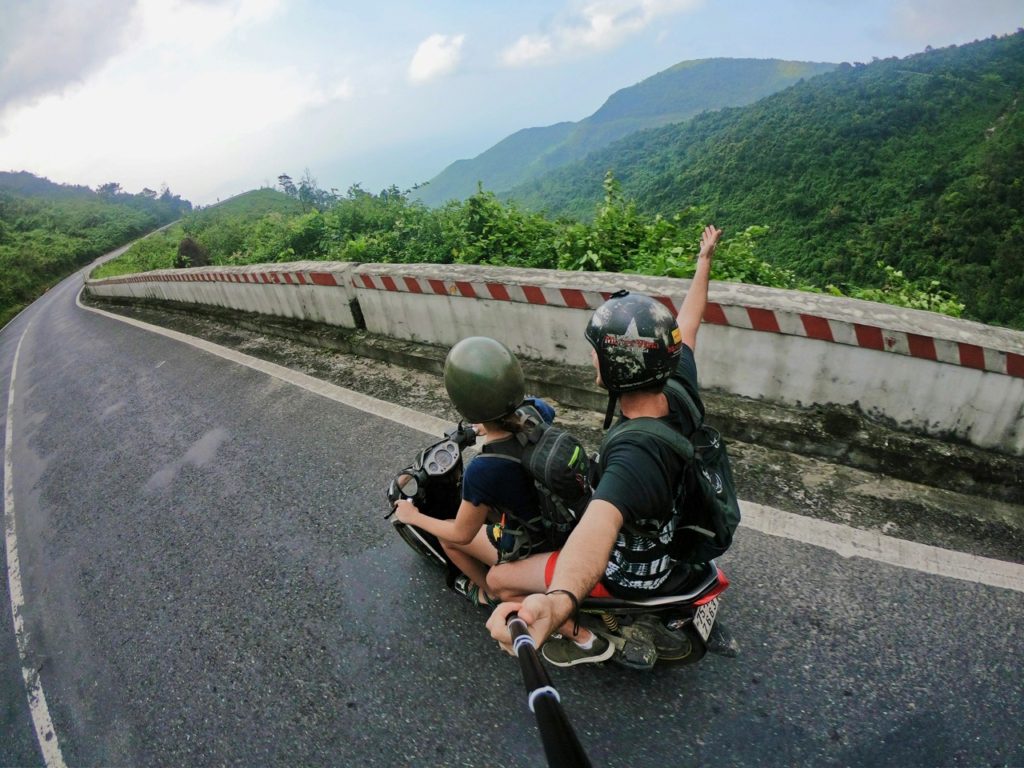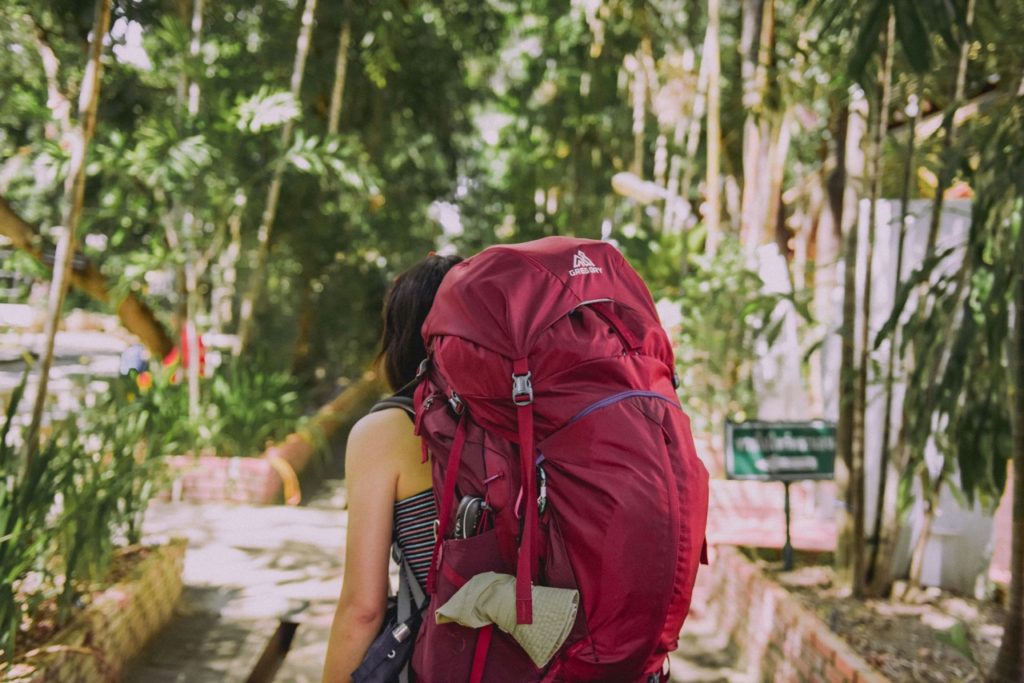Contents
Are you a solo traveler who is excited to explore more and more? Whether it’s for navigation, emergency communication, or simply sharing your adventures with loved ones, having reliable connectivity can make all the difference. A study by cbi.Eu reveals that 59% of solo travelers believe it’s crucial to adapt their bookings on the go, using websites and phone applications.
With solo travel witnessing a remarkable 42% surge in bookings over two years, it’s essential to equip yourself with effective tools and strategies for seamless connectivity during your solo expeditions. In this article, we share essential solo travel connectivity tips to help you stay connected wherever you go.
The Connectivity Challenge for Solo Travelers
Solo traveling presents unique challenges when it comes to maintaining connectivity. Unlike group tours or package vacations, independent explorers often venture into remote areas where cellular coverage and internet access can be intermittent or nonexistent. Additionally, international roaming fees and varying network standards across borders can make it challenging to stay connected without careful planning.

Have a look here at the experience of an travel author who embarked on a week-long journey aboard a traditional two-masted pinisi ship in Indonesia.
- Ensuring safety through emergency communication access
- Enabling seamless navigation with maps and travel apps
- Accessing up-to-date information like weather reports and local advisories
- Sharing memorable experiences and staying connected with loved ones
- Flexibility to modify bookings/itineraries on the go
- Building local connections through online communities and networks
While connectivity is undoubtedly valuable, solo travelers must also prepare backup contingencies for potential outages or off-the-grid situations to ensure uninterrupted communication. Striking the right balance between leveraging technology and embracing the spirit of independent adventure is crucial. Here are some solo travel connectivity tips to help you navigate these challenges.
Tech-Savvy Preparations for Solo Travel Planning
Before embarking on your solo adventure, it’s essential to assess your connectivity needs. Consider the locations you’ll be visiting and their specific challenges, such as network reliability, political restrictions, or geographical barriers. For example, if you’re planning to explore remote areas with limited cellular coverage, satellite communication devices may be a wise investment.
Additionally, evaluate your personal needs for connectivity. Will you primarily need access for emergency communication, or do you anticipate streaming content, sharing photos and videos on social media, or participating in video calls with loved ones?

Selecting the Best Tech Gadgets for Travelers
Once you’ve determined your connectivity requirements, it’s time to select the appropriate gear. Portable Wi-Fi hotspots for travel, international SIM cards, and the best apps for solo travel can be invaluable tools for staying connected while on the go.
- Portable Wi-Fi Hotspots: These compact devices allow you to create a personal Wi-Fi network by connecting to local cellular networks or satellite services. They provide a secure and reliable internet connection for multiple devices, making them ideal for solo travelers who need to stay connected across various gadgets.
- International SIM Cards: If you plan to travel to multiple countries, consider investing in an international SIM card that offers affordable global data plans and extensive coverage across borders. This can help you avoid exorbitant roaming charges and ensure uninterrupted connectivity.
- Smartphone Apps: Several mobile apps are designed specifically for travelers, offering features like offline maps, translation services, and even virtual private network (VPN) capabilities for added security when using public Wi-Fi networks.
When selecting your gear, consider factors such as battery life, compatibility with your devices, and ease of use. Additionally, look for budget-friendly travel gear that caters to cost-conscious solo travelers, ensuring you get the most bang for your buck without compromising on quality or reliability.
Optimizing Remote Travel Connectivity in Remote Areas
Even in the most remote locations, there are ways to stay connected as a solo traveller. Here are some solo travel connectivity tips for optimising your connectivity:
Navigating International Data Plans and Global Data Roaming
If you’re planning to rely primarily on your smartphone for connectivity, it’s crucial to research international data plans offered by your home carrier or consider purchasing a local SIM card upon arrival at your destination. Many leading telecommunication companies now offer global data plans that minimize roaming costs while providing wide coverage across multiple countries.
Satellite Communication for Off-the-Grid Travel
For solo travelers venturing into truly remote areas with little to no cellular coverage, satellite communication devices can be a lifesaver. Portable satellite hotspots and phones offer reliable connectivity, even in isolated regions, by connecting directly to orbiting satellites.
While these devices can be more expensive than traditional options, they provide peace of mind and ensure you can stay connected in case of emergencies or unexpected situations. Popular options include the Iridium GO! Satellite Hotspot, Garmin inReach Explorer+, and the Thuraya XT-LITE Satellite Phone.
Local SIM Card Strategies for Backpacking Solo
Another cost-effective solution for staying connected abroad is to purchase a local SIM card upon arrival at your destination. This approach is one of the key solo travel connectivity tips to consider if you plan to spend an extended period in a specific country or region.
Before purchasing a local SIM card, research the leading mobile network providers and their data plans to find the best deal based on your anticipated usage. Additionally, ensure that your phone is unlocked and compatible with the local network frequencies.

Staying Secure and Safe on Solo Female Travel
As a solo traveler, safeguarding your online presence and protecting sensitive information is paramount. Utilizing public Wi-Fi networks or unsecured internet connections can leave you vulnerable to cyber threats like hacking, identity theft, and data breaches.
Securing Connections for Digital Safety for Travelers
Invest in a reputable virtual private network (VPN) app or service to encrypt your internet traffic and shield your online activities from prying eyes. Additionally, consider installing a firewall app on your devices to add an extra layer of protection against potential cyber attacks.
Managing Data Usage and Personal Hotspot Safety
Roaming charges and data overages can quickly add up, especially when traveling internationally. To avoid unexpected costs, it’s crucial to monitor and manage your data usage effectively.
Many smartphones and portable Wi-Fi devices offer built-in data tracking tools, allowing you to set limits and receive alerts when you’re approaching your data allowance. Additionally, consider enabling data-saving modes on your apps and devices, which can help reduce unnecessary data consumption.
Backup Plans and Troubleshooting Connectivity Issues
Despite your best efforts, connectivity issues can still arise during your solo adventures. It’s essential to have backup plans in place to ensure you can navigate, communicate, and access crucial information even when faced with network outages or device malfunctions.
Establishing Contingency Plans for Solo Travel Safety
Consider preloading offline maps and translations onto your devices, as well as researching emergency protocols and contacts specific to the regions you’ll be visiting. Additionally, carry hard copies of important documents, such as travel itineraries and accommodation details, as a precautionary measure.
Troubleshooting Tips for Internet for Backpackers
If you encounter connectivity problems while on the road, don’t panic. There are several troubleshooting steps you can take to potentially resolve the issue.
Start by restarting your device or toggling airplane mode on and off. If that doesn’t work, try connecting to a different Wi-Fi network or resetting your portable Wi-Fi hotspot. In case of account-related issues, contact your service provider’s customer support for assistance.
If all else fails, seek out local internet cafes, coworking spaces, or accommodations with reliable Wi-Fi connections until you can restore your primary connectivity solution.
Staying Socially Connected and Informed on the Road
One of the joys of solo travel is the opportunity to immerse yourself in local cultures and connect with people from diverse backgrounds. Joining local social networks and community forums can be an invaluable resource for finding reliable information, seeking advice, and even meeting fellow travelers to explore with.

Joining Solo Traveler Networks
Before your trip, research popular online communities and social media groups specific to your destinations. Once on the ground, don’t hesitate to engage with locals and ask for recommendations on the best ways to stay informed and connected.
Sharing Experiences as a Solo Traveler
Solo travel often provides opportunities for personal growth, self-discovery, and unforgettable adventures. Maintaining a travel journal or blog can be a wonderful way to document your experiences and share them with loved ones back home or even inspire others to embark on their own solo journeys.
Consider setting up a dedicated blog or social media account specifically for your travels, and take advantage of connectivity tools to upload photos, videos, and written entries while on the go. Not only will this allow you to stay connected with your support network, but it can also serve as a cherished memento of your solo adventures.
Frequently Asked Questions (FAQs)
- What connectivity gear should I prioritize for a backpacking trip in multiple countries?
For multi-country backpacking trips, versatile devices like unlocked dual-SIM smartphones, portable Wi-Fi routers with international compatibility, and universal travel adapters are essential. These tools will allow you to seamlessly switch between local SIM cards and Wi-Fi networks, ensuring uninterrupted connectivity across borders.
- How can I avoid cell charges when traveling internationally?
To avoid cell charges when traveling internationally, you can:
- Turn off roaming.
- Use airplane mode.
- Connect to Wi-Fi networks.
- Purchase an E-SIM.
- Check for international plans from your carrier.
- Consider using a portable Wi-Fi hotspot.
- Use a VPN for added security.
- Keep track of your data usage.
- Use travel apps for affordable options.
- Inform your carrier about your travel plans.
These tips can help you stay connected without racking up hefty charges while abroad.
- Is 5GB enough for International travel?
For most international trips, 5GB of data should be sufficient for common internet activities like browsing, email, social media, and light streaming. However, if you plan to stream a lot of video content, download large files, or have multiple devices connected, you may need more data.
It’s always a good idea to monitor your data usage closely and adjust your plan or purchase additional data as needed to avoid overage charges or slow speeds from throttling.
Stay Connected
While traveling by yourselves, staying connected is crucial. By using technology wisely, ensuring connectivity even in remote places, focusing on digital safety, and making local connections, solo travelers can balance tech use with independent exploration. Equip yourself with the right tools and backup plans for both connected and off-the-grid experiences, creating lasting memories on your solo journey.
Pin Now, Read Later




